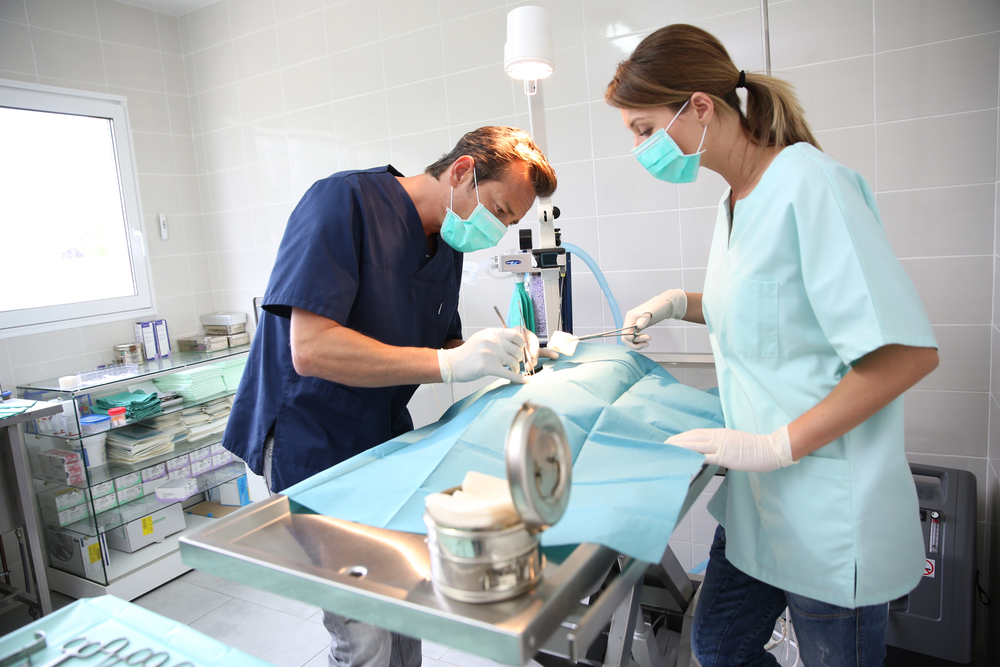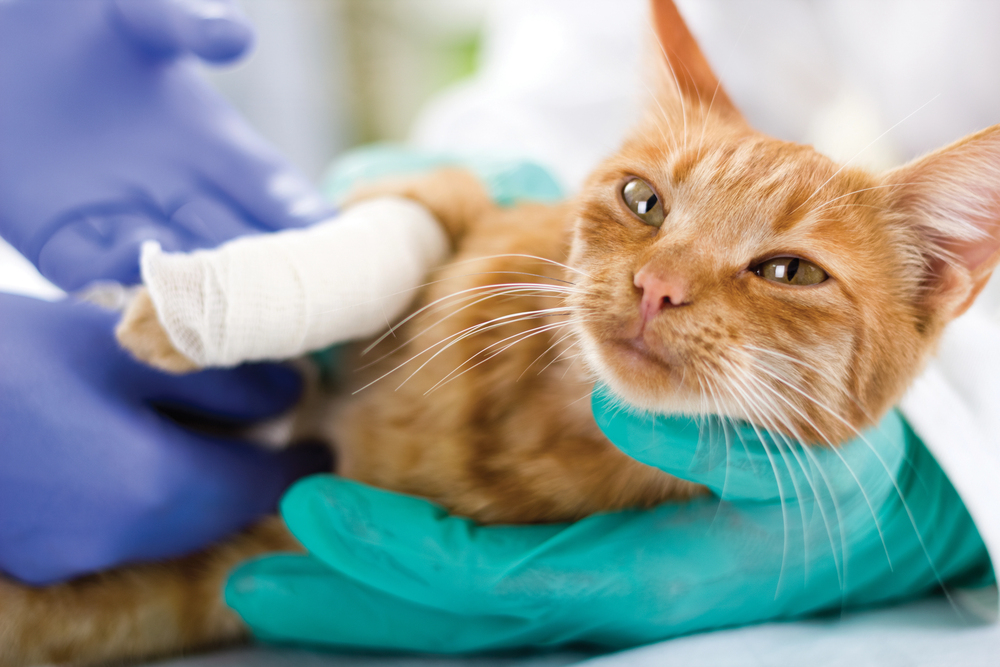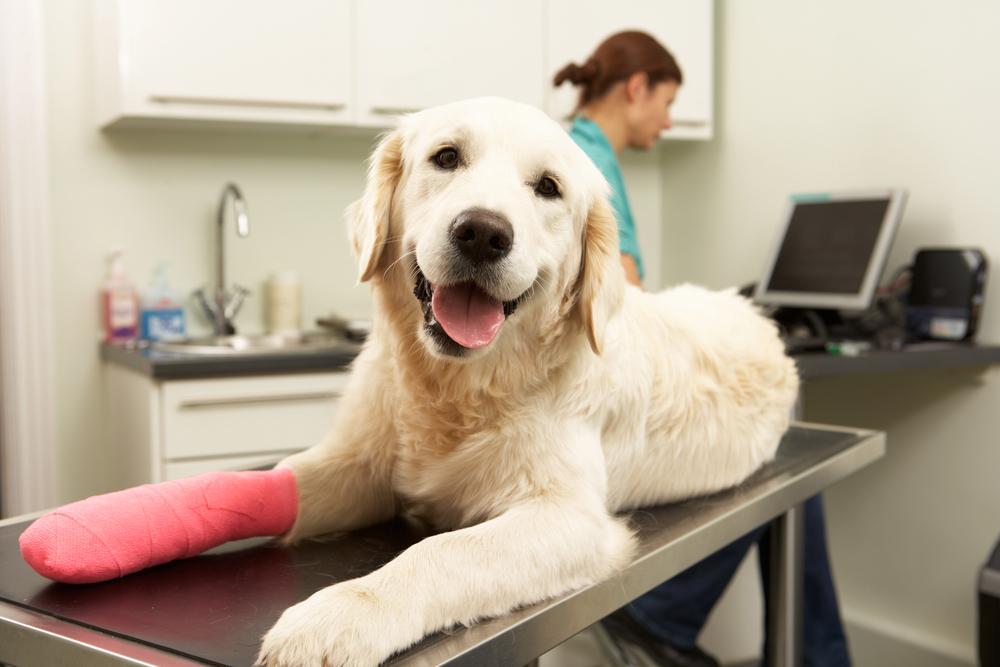
When in doubt, ask your vet
Read Time: 4 minutes
Knowing when to take your pet to an emergency vet versus your regular veterinarian can be the difference between life and death in critical situations. Understanding how to differentiate urgent medical issues from routine health concerns is essential for every pet owner.
When To Visit an Emergency Vet
Emergency veterinarians are equipped to handle life-threatening situations that require immediate attention. You should visit an emergency vet if your pet is experiencing:
Severe Trauma or Injury
Injuries from accidents or physical trauma can be life-threatening and require immediate attention.
- Hit by a car
- Experienced a major fall
- Severe bleeding that doesn’t stop within five minutes
- Broken bones
- Visible injuries

Difficulty Breathing
Any sign of difficulty breathing is a critical emergency. Pets who are choking, wheezing, or gasping for air need urgent medical intervention to avoid serious complications or even death.
- Labored breathing
- Choking
- Gasping for air
- Persistent coughing
- Pale/blue gums
Neurological Issues
Neurological symptoms can be alarming and may indicate serious conditions such as seizures or spinal cord injuries.
- Seizures, even if they last only a few seconds
- Inability to stand
- Sudden disorientation
Ingestion of Toxic Substances
Pets are naturally curious, and unfortunately, this curiosity can lead them to ingest harmful substances
- Household Chemicals:
- Antifreeze
- Cleaning products (bleach, detergents, disinfectants)
- Pesticides and rodenticides
- Medications:
- Over-the-counter painkillers (ibuprofen, acetaminophen)
- Prescription medications (antidepressants, blood pressure drugs)
- Veterinary medications taken in large quantities
- Human Foods:
- Chocolate
- Grapes and raisins
- Xylitol (found in sugar-free gum, candy, and some peanut butter)
- Onions
- Garlic
- Plants:
- Lilies (especially toxic to cats)
- Sago palms
- Oleander
- Azaleas
- Outdoor Hazards:
- Fertilizers
- Lawn treatments
- Certain mushrooms
Ingestion of these substances can result in severe symptoms, including vomiting, diarrhea, seizures, difficulty breathing, and even organ failure. Immediate medical attention is essential if you suspect your pet has ingested something toxic.
Severe Pain or Distress
Pain that causes your pet to whine, tremble, or act aggressively can indicate severe internal injuries or other critical health issues.
- Whining
- Shaking
- Excessive drooling
- Uncharacteristic aggression
- Swollen abdomen, which could indicate bloat or internal injury
Uncontrolled Vomiting or Diarrhea
Persistent vomiting or diarrhea, particularly when accompanied by blood, can quickly lead to dehydration and other serious complications.
- Repeated vomiting or diarrhea, especially if it contains blood or continues for more than 24 hours
When To Visit Your Regular Veterinarian
For non-life-threatening issues, it’s usually safe to visit your regular veterinarian. Schedule an appointment if your pet is experiencing:
- Minor Injuries:
- Small cuts, scrapes, or mild limping that isn’t getting worse
- Slight swelling or bruising that can be monitored at home
- Chronic Conditions:
- Managing ongoing health issues like arthritis, diabetes, or allergies
- Routine blood work or medication adjustments
- Behavioral Changes:
- Gradual changes in appetite, energy levels, or mood
- RNew but non-urgent symptoms that persist over a few days
- Preventative Care:
- Annual wellness exams, vaccinations, dental cleanings, and nutritional consultations
When in doubt, it’s always best to call your regular veterinarian to discuss your pet’s symptoms. They can advise whether the situation requires urgent care or if it can be managed with a scheduled visit.

What To Do if You’re Unsure
Sometimes, it’s hard to determine whether a situation is an emergency. If you’re ever uncertain, follow these steps:
- Call Your Regular Veterinarian – They can help assess the severity of your pet’s symptoms and guide you on the best course of action.
- Contact an Emergency Vet – If your regular veterinarian is closed or unavailable, don’t hesitate to call an emergency vet clinic.
- Trust Your Instincts – You know your pet best. If something seems seriously wrong, it’s better to be safe than sorry.
We’re Here To Help
Whether your pet needs routine care or emergency treatment, our team is here to provide the highest quality of veterinary care. If you’re ever in doubt about your pet’s health, don’t hesitate to reach out to us. We’ll help you decide the best course of action to keep your furry friend safe and healthy.




